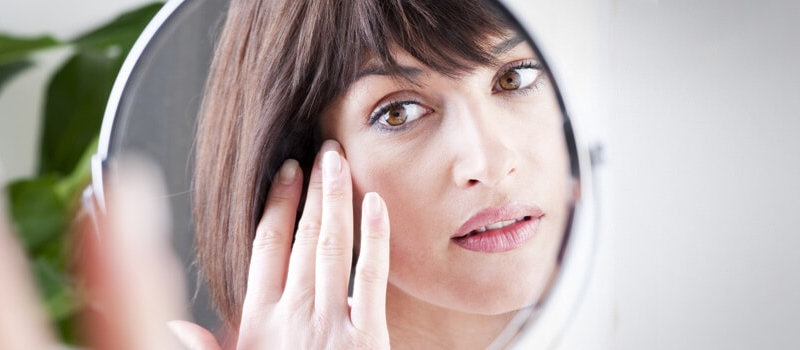How to Treat Rosacea
Rosacea is a skin condition that makes your face appear red in some areas. This condition can also cause other symptoms that affect your skin. If you’re feeling self-conscious about rosacea, [...]

You don’t have to live with deep facial wrinkles anymore. Today, dermatologists can offer a variety of skin resurfacing techniques to treat wrinkling and other skin conditions. Skin resurfacing techniques include chemical peels, microdermabrasion and laser skin resurfacing. What differentiates these resurfacing techniques is the location on the body and depth of skin targeted by the treatments. This determines the amount of downtime and the results you can expect.
Facial wrinkles result from many factors: Sun exposure, heredity, acne scars, and various lifestyle choices including nutritional habits, alcohol consumption and smoking. Pigmentary changes such as brown sunspots (so-called “liver spots”) and blotchiness may also occur due to repeated suntans, sunburns, aging, pregnancy or genetic influences. Regardless of skin resurfacing technique chosen, the procedure involves a controlled injury to your skin. As your skin recovers, the healing process normalizes pigmentation and restores collagen lost from years of damage and the natural affects of aging. Before and after pictures of chemical peels, microdermabrasion and laser skin resurfacing can show you the results patients typically experience.
Facial chemical peels use differing formulas of chemicals to treat your skin. Mild treatments (like glycolic chemical peels, that use glycolic acid) create very superficial changes. The result is a no-downtime procedure that produces a fresher, healthier surface texture. More irritating chemicals (such as phenol) can cause more profound changes in your skin.
Laser skin resurfacing can reverse some of the changes seen in our skin as we age. Different laser devices are used for different skin conditions and aesthetic goals. Sun spots, liver spots and mottled brown discoloration are often treated with alexandrite lasers. Alexandrite laser treatments specifically target unwanted discoloration, with little or no effect on surrounding skin. Facial wrinkling due to suntans, sunburns and aging can be improved with fractional lasers. Fractional lasers deliver laser energy in a grid of microscopic dots across a treatment area. Your skin naturally “connects the dots,” forming fresh new skin, replacing lost collagen for months after treatment. This can improve discoloration, wrinkles, and can tighten loose skin.
Before undergoing skin resurfacing or any type of treatment, proper evaluation and diagnosis by a board certified dermatologist is advisable. If you live in Scotch Plains, South Orange, Roseland, Springfield, Madison, Chatham, or anywhere in northern New Jersey, please e-mail or call Dermatology Consultants of Short Hills at 908-232-6245 to schedule a consultation with Dr. Lin, Dr. Farley-Loftus and Dr. Vuong.
Age spots, also known as sunspots or liver spots, are harmless brown, freckle-like spots that occur on sun-exposed skin. Age spots are collections of pigment (melanin) that accumulate in the skin due to sun exposure. We develop these spots in our late 20’s and 30’s, and they can increase in number throughout life. Sun spots on the face, hands or forearms often give away our age. In the past decade, removal of these spots with medical lasers has become a popular procedure. People from Millburn, Mendham, Morristown, Glen Ridge, Essex Falls, and all over northern New Jersey choose Dermatology Consultants of Short Hills for their laser procedure.
Sun spots usually have no symptoms and are only of cosmetic concern. However, because they can mimic melanoma and other skin cancers, they require careful evaluation by a dermatologist. A proper sun avoidance regimen is the key to minimize the number of sunspots you develop. This includes proper attire and regular sunscreen application to minimize suntans and sunburns. Keep in mind, sun damage is cumulative throughout your life. If you do develop sunspots, there are several removal options, including laser removal, chemical peels, and liquid nitrogen therapy. To date, laser removal is the most effective treatment. In most cases, only one or two treatments are required. Treatments take about 20 minutes and are well tolerated by patients. View our gallery of before and after photos to see the results laser sun spot removal can achieve.
Before undergoing any type of treatment, proper evaluation and diagnosis by a board certified dermatologist is advisable. You should also consult a dermatologist if you have risk factors for skin cancer, or are uncomfortable with the appearance of a new or changing growth. If you live in Livingston, Scotch Plains, Boonton, Roseland, or anywhere in northern New Jersey, please e-mail or call Dermatology Consultants of Short Hills at 973-232-6245 to schedule a consultation with Dr. Lin, Dr. Farley-Loftus and Dr. Vuong.
